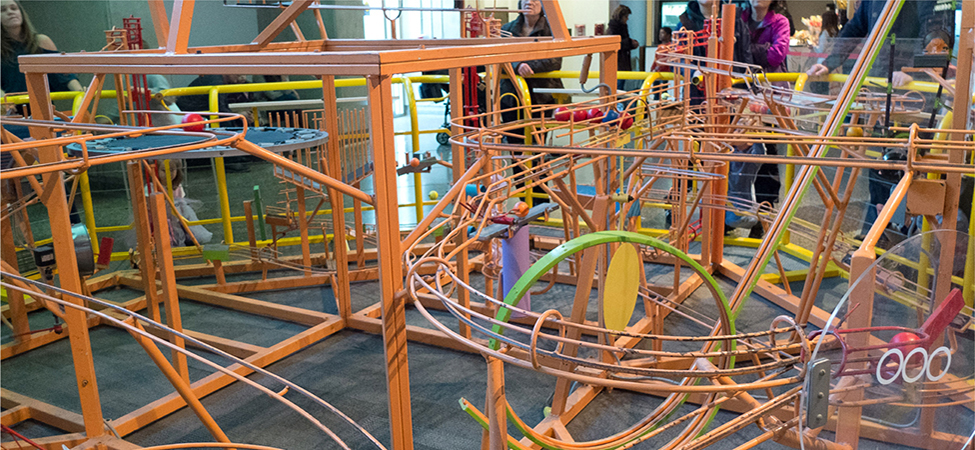| << Chapter < Page | Chapter >> Page > |

In George Rhoads’ rolling ball sculpture, the principle of conservation of energy governs the changes in the ball’s kinetic energy and relates them to changes and transfers for other types of energy associated with the ball’s interactions. In this chapter, we introduce the important concept of potential energy. This will enable us to formulate the law of conservation of mechanical energy and to apply it to simple systems, making solving problems easier. In the final section on sources of energy, we will consider energy transfers and the general law of conservation of energy. Throughout this book, the law of conservation of energy will be applied in increasingly more detail, as you encounter more complex and varied systems, and other forms of energy.

Notification Switch
Would you like to follow the 'University physics volume 1' conversation and receive update notifications?